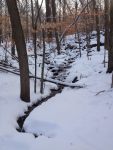
The simplest answer is, “Whatever you want it to be.” I have found that journaling is a lot like meditation: There is no single way of journaling that is right for everyone; to the contrary, journaling is whatever form of routine writing that supports us.
In the same way that meditation is not limited to sitting with our legs crossed and our eyes closed, journaling is not limited to whatever particular practice that one calls “journaling.” The walking meditation espoused by Thich Nhat Hanh and others, for instance, is a perfectly acceptable alternative to sitting on a cushion if it is the form of meditation that supports our health – mental, physical, spiritual, emotional… The form is not important, but rather the intention of centering ourselves and tapping into our awareness of what is going on inside us and around us.
Likewise, there are countless types of journaling that are beneficial, not just keeping a diary. We can write page upon page of detailed reminiscences of our day’s thoughts and activities, or we can jot down a few words that have been swirling around our brains. We can make a list of things we are grateful for, or sketch out a goal for the day, week, or month. Any of those and many other forms of journaling are perfectly acceptable alternatives if they are the form of journaling that supports our health – mental, physical, spiritual, emotional… The key is, again, not the form, but rather the intention of paying attention to our thoughts and actions by giving them even the relatively tiny bit of attention and time necessary to write them down.
Journaling of that sort is a type of mindfulness practice.
Best of all, we don’t have to practice just one form of meditation or one form of journaling. On any given day, we can pursue the form that we feel we need at that time. It is a healthy thing to regularly think about what we have in our lives to be grateful for, but it may not be the type of journaling that we most need on a particular day.
Remember that we cannot pick incorrectly when it comes to journaling, meditation, and other mindfulness practices. Any one of them can benefit us.



